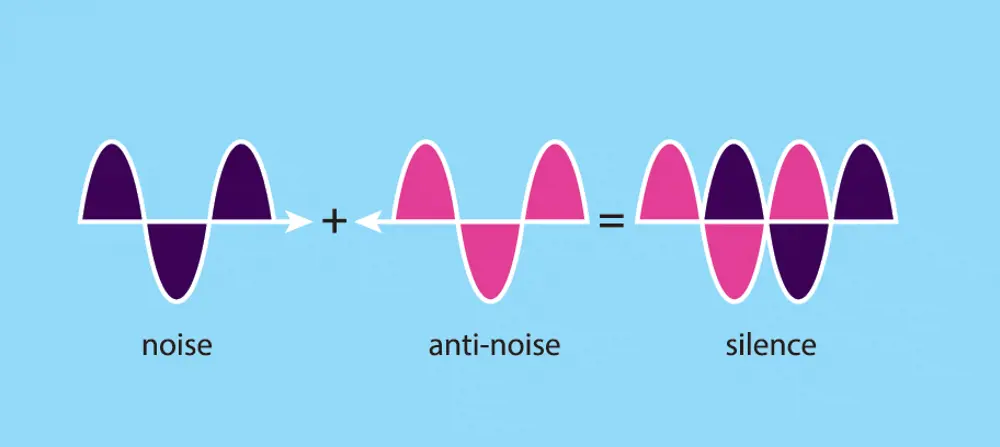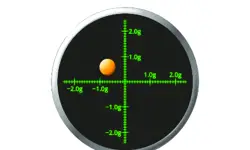
Noise-cancelling headphones
Active Noise-Cancelling (ANC) headphones are used mainly by train and plane passengers wanting to listen to radio, music or film without hearing background low-frequency engine and travel noises.
ANC headphones usually incorporate two microphones near each ear piece – one outside and one inside. The signal from the outside microphone is reversed and then amplified (or reduced) to the level that the noise is expected to leak through to the inside of the headphones. If perfectly reversed and exactly the same amplitude as the signal that leaks through, then silence results. The microphone inside the headphones checks that this happens correctly and alters the gain of the amplifier if needs be, while at the same time removing any wanted music generated by the headphones themselves.

Cancelling out unwanted sound waves
Although not perfect these headphones allow the user to hear their music free from distractions or create quiet space so that the wearer can sleep peacefully or work at their PC in a busy open plan environment.
Sharp sounds and voices pose a greater challenge to the designer. The latest digital ANC headphones employ a signal processor equipped with sound mapping software to analyse the noisy environment. When first switched on the listener hears the normal level of noise reduction followed a moment later by an even quieter ambience as the system maps the environment and responds accordingly.
***
This article has been adapted from "How does that work? Noise-cancelling headphones", which originally appeared in the print edition of Ingenia 66 (March 2016).
Keep up-to-date with Ingenia for free
SubscribeRelated content
Electricals & electronics

Accelerometers
Used in earthquake measurements, laptops, planes and even in stargazing apps, today’s accelerometers are much smaller than when they were first developed in 1927. Find out how they detect movement and vibration.

How to maximise loudspeaker quality
Ingenia asked Dr Jack Oclee-Brown, Head of Acoustics at KEF Audio, to outline the considerations that audio engineers need to make when developing high-quality speakers.

Cable fault locator
The winner of the Institute of Engineering and Technology’s 2014 Innovation Award was EA Technology’s CableSnifferTM, which uses a probe and chemical sensing technology to identify faults, saving energy companies millions of pounds each year.

High speed evolution
In December 2010, Eurostar International Ltd awarded a contract for 10 new high speed trains to Siemens. The company has used a system developed over decades to maximise the performance and passenger-carrying ability of its 320km/h trains.
Other content from Ingenia
Quick read

- Environment & sustainability
- Opinion
A young engineer’s perspective on the good, the bad and the ugly of COP27

- Environment & sustainability
- Issue 95
How do we pay for net zero technologies?
Quick read

- Transport
- Mechanical
- How I got here
Electrifying trains and STEMAZING outreach

- Civil & structural
- Environment & sustainability
- Issue 95